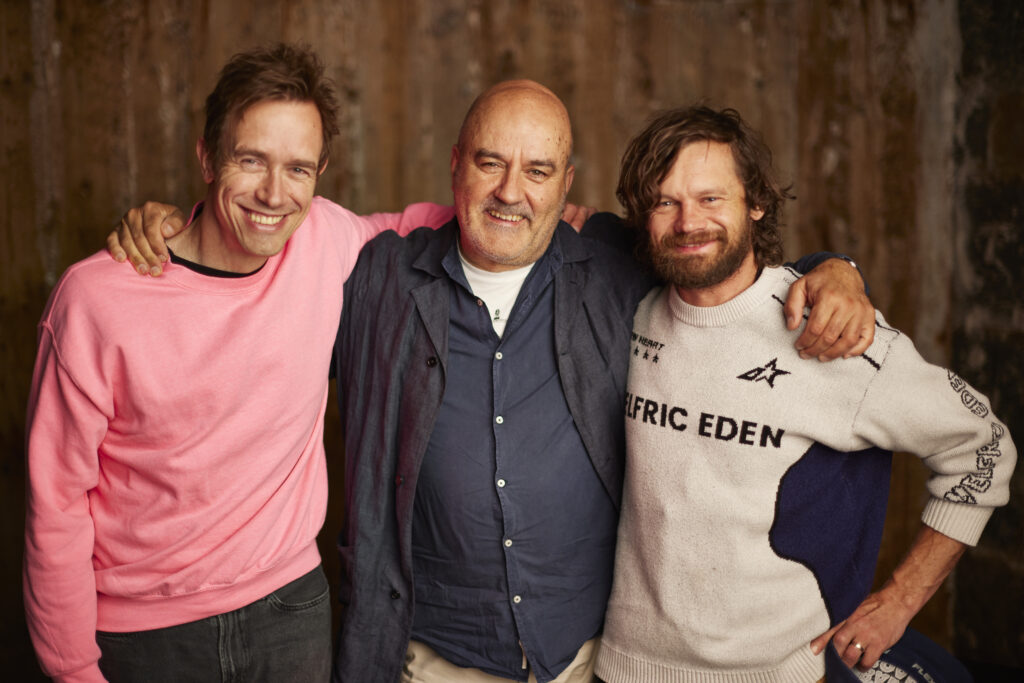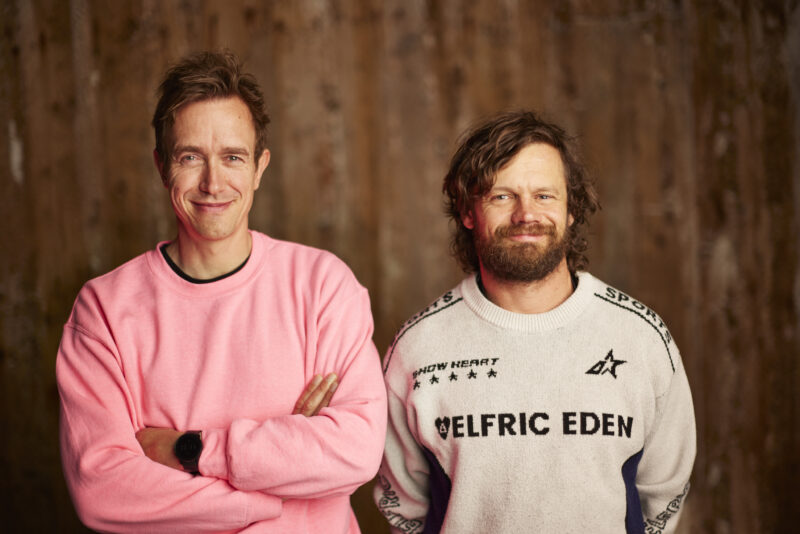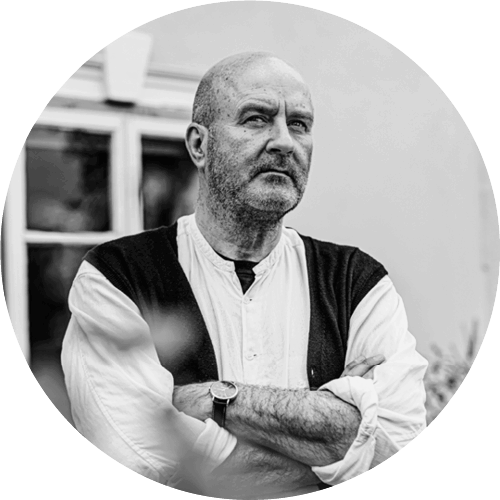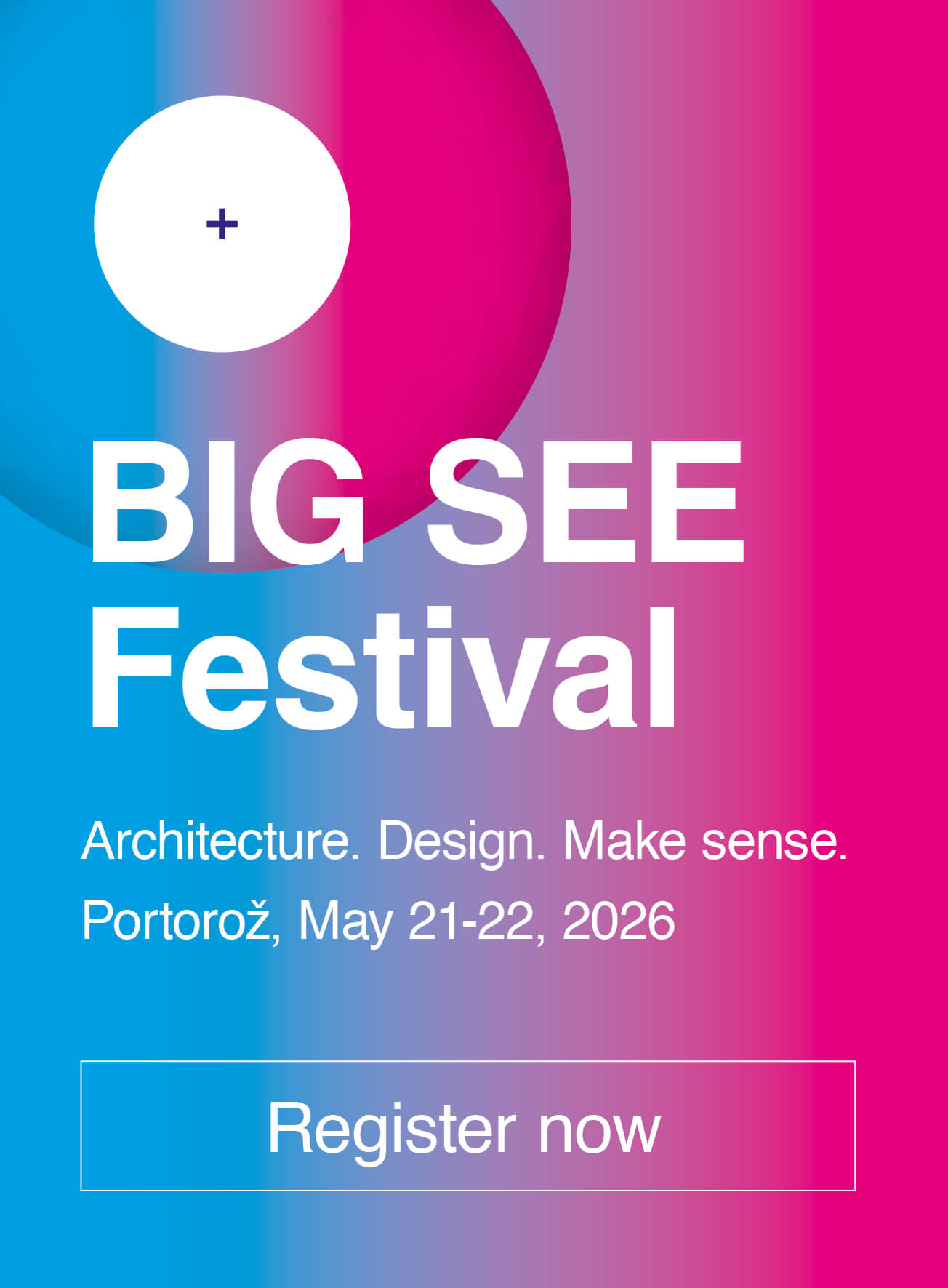In a profession often weighed down by solemnity and convention, Czech architecture studio Mjölk is a rare force of lightness, spontaneity, and social intent. At the BIG Architecture 2025 event in Portorož, the studio’s co-founders Jan Mach and Jan Vondrák engaged in a lively and thoughtful conversation with Slovenian architect and curator Aleksander Ostan, recorded as part of the BIG SEE Talks, offering a vivid look into how two young architects from Liberec have grown a practice defined by wit, autonomy, and deep connection to place.

“Most of the meetings or actions in our field are like funerals. Super boring. We are trying to break it because we don’t like it. Our profession is super funny and super creative. I don’t know why we should wear only black clothes.”
— Jan Vondrák
Starting with Nothing—and Redefining Everything
Straight out of university, Jan and Jan chose a path most would avoid: no internships, no years under a mentor, just immediate immersion into their own architectural studio. Their early days were filled not with commissions but with self-initiated ideas, such as the now-famous wooden mountain tower, proposed to small municipalities with no formal competition or client brief. The message? Build first, prove later.
This hands-on approach extended to a public sauna, constructed overnight with friends on an abandoned concrete island in a lake. It wasn’t sanctioned—but it was loved. And it launched their career. The project gained attention on ArchDaily, transforming Mjölk from a studio without clients into one with a clear and resonating voice.
Architecture as a Cultural and Social Act
Far beyond buildings, Mjölk’s projects seep into local life. They organized a film festival to revitalize a deserted historic street in their hometown, drawing thousands to watch films in the open air. They’ve opened a neighborhood pub as a social hub, turning forgotten spaces into vibrant community centers. This is activism in architectural form—not just building structures, but weaving themselves into the cultural and social rhythms of their city.
“Why sacrifice your life for something like architecture? It’s a really nice thing. But… we and our employees need to be happy to design projects for happy people. You have to experience happiness if you want to do something.”
— Jan Vondrák & Jan Mach

Scaling Responsibly, Growing with Purpose
Now leading a studio of 30 (and planning for 50), Mjölk continues to avoid rigid hierarchies. Design discussions are horizontal, and founders remain deeply involved in each project. Their growth is organic, shaped by a desire to stay connected—to their clients, collaborators, and ideals.
While many firms chase competitions, Mjölk is skeptical of their value. Instead, they proactively seek out sites and local governments, offering architecture as a kind of urban acupuncture—sensitive, precise, and regenerative. In northern Czech towns scarred by post-war displacement and communist-era interventions, they see both scars and opportunities. Their current work focuses on social housing, urban squares, and wooden infills in neglected historical centers—projects that reflect not prestige but relevance.
Embracing AI, But Holding Onto the Human
Unlike many who view artificial intelligence with suspicion, Jan and Jan see it as an opportunity to rethink what architects do and how they work. AI can handle the repetitive; architects must remain creative, empathetic, and human. For Mjölk, the future lies in projects born not from briefs but from beliefs—in people, in place, and in the joy of building differently.
Mjölk’s work demonstrates that contemporary architecture can be both contextually grounded and conceptually agile. By combining pragmatic urban interventions with self-initiated projects, their practice navigates between social engagement and architectural clarity. Rather than pursuing grand gestures, they focus on modest, well-considered solutions that respond to local needs while challenging conventional models of architectural production.

Scaling Responsibly, Growing with Purpose
Now leading a studio of 30 (and planning for 50), Mjölk continues to avoid rigid hierarchies. Design discussions are horizontal, and founders remain deeply involved in each project. Their growth is organic, shaped by a desire to stay connected—to their clients, collaborators, and ideals.
While many firms chase competitions, Mjölk is skeptical of their value. Instead, they proactively seek out sites and local governments, offering architecture as a kind of urban acupuncture—sensitive, precise, and regenerative. In northern Czech towns scarred by post-war displacement and communist-era interventions, they see both scars and opportunities. Their current work focuses on social housing, urban squares, and wooden infills in neglected historical centers—projects that reflect not prestige but relevance.
Embracing AI, But Holding Onto the Human
Unlike many who view artificial intelligence with suspicion, Jan and Jan see it as an opportunity to rethink what architects do and how they work. AI can handle the repetitive; architects must remain creative, empathetic, and human. For Mjölk, the future lies in projects born not from briefs but from beliefs—in people, in place, and in the joy of building differently.
Mjölk’s work demonstrates that contemporary architecture can be both contextually grounded and conceptually agile. By combining pragmatic urban interventions with self-initiated projects, their practice navigates between social engagement and architectural clarity. Rather than pursuing grand gestures, they focus on modest, well-considered solutions that respond to local needs while challenging conventional models of architectural production.

Conversation led by
Aleksander Ostan
Architect, urban planner and curator. He teaches at the Faculty of Architecture in Ljubljana and is co-founder of Atelje Ostan Pavlin, where he explores architecture, space and sustainability through a holistic lens.
Video and portraits by
Primož Korošec
Powered by
In a profession often weighed down by solemnity and convention, Czech architecture studio Mjölk is a rare force of lightness, spontaneity, and social intent. At the BIG Architecture 2025 event in Portorož, the studio’s co-founders Jan Mach and Jan Vondrák engaged in a lively and thoughtful conversation with Slovenian architect and curator Aleksander Ostan, recorded as part of the BIG SEE Talks, offering a vivid look into how two young architects from Liberec have grown a practice defined by wit, autonomy, and deep connection to place.

“Most of the meetings or actions in our field are like funerals. Super boring. We are trying to break it because we don’t like it. Our profession is super funny and super creative. I don’t know why we should wear only black clothes.”
— Jan Vondrák
Starting with Nothing—and Redefining Everything
Straight out of university, Jan and Jan chose a path most would avoid: no internships, no years under a mentor, just immediate immersion into their own architectural studio. Their early days were filled not with commissions but with self-initiated ideas, such as the now-famous wooden mountain tower, proposed to small municipalities with no formal competition or client brief. The message? Build first, prove later.
This hands-on approach extended to a public sauna, constructed overnight with friends on an abandoned concrete island in a lake. It wasn’t sanctioned—but it was loved. And it launched their career. The project gained attention on ArchDaily, transforming Mjölk from a studio without clients into one with a clear and resonating voice.
Architecture as a Cultural and Social Act
Far beyond buildings, Mjölk’s projects seep into local life. They organized a film festival to revitalize a deserted historic street in their hometown, drawing thousands to watch films in the open air. They’ve opened a neighborhood pub as a social hub, turning forgotten spaces into vibrant community centers. This is activism in architectural form—not just building structures, but weaving themselves into the cultural and social rhythms of their city.
“Why sacrifice your life for something like architecture? It’s a really nice thing. But… we and our employees need to be happy to design projects for happy people. You have to experience happiness if you want to do something.”
— Jan Vondrák & Jan Mach

Scaling Responsibly, Growing with Purpose
Now leading a studio of 30 (and planning for 50), Mjölk continues to avoid rigid hierarchies. Design discussions are horizontal, and founders remain deeply involved in each project. Their growth is organic, shaped by a desire to stay connected—to their clients, collaborators, and ideals.
While many firms chase competitions, Mjölk is skeptical of their value. Instead, they proactively seek out sites and local governments, offering architecture as a kind of urban acupuncture—sensitive, precise, and regenerative. In northern Czech towns scarred by post-war displacement and communist-era interventions, they see both scars and opportunities. Their current work focuses on social housing, urban squares, and wooden infills in neglected historical centers—projects that reflect not prestige but relevance.
Embracing AI, But Holding Onto the Human
Unlike many who view artificial intelligence with suspicion, Jan and Jan see it as an opportunity to rethink what architects do and how they work. AI can handle the repetitive; architects must remain creative, empathetic, and human. For Mjölk, the future lies in projects born not from briefs but from beliefs—in people, in place, and in the joy of building differently.
Mjölk’s work demonstrates that contemporary architecture can be both contextually grounded and conceptually agile. By combining pragmatic urban interventions with self-initiated projects, their practice navigates between social engagement and architectural clarity. Rather than pursuing grand gestures, they focus on modest, well-considered solutions that respond to local needs while challenging conventional models of architectural production.

Scaling Responsibly, Growing with Purpose
Now leading a studio of 30 (and planning for 50), Mjölk continues to avoid rigid hierarchies. Design discussions are horizontal, and founders remain deeply involved in each project. Their growth is organic, shaped by a desire to stay connected—to their clients, collaborators, and ideals.
While many firms chase competitions, Mjölk is skeptical of their value. Instead, they proactively seek out sites and local governments, offering architecture as a kind of urban acupuncture—sensitive, precise, and regenerative. In northern Czech towns scarred by post-war displacement and communist-era interventions, they see both scars and opportunities. Their current work focuses on social housing, urban squares, and wooden infills in neglected historical centers—projects that reflect not prestige but relevance.
Embracing AI, But Holding Onto the Human
Unlike many who view artificial intelligence with suspicion, Jan and Jan see it as an opportunity to rethink what architects do and how they work. AI can handle the repetitive; architects must remain creative, empathetic, and human. For Mjölk, the future lies in projects born not from briefs but from beliefs—in people, in place, and in the joy of building differently.
Mjölk’s work demonstrates that contemporary architecture can be both contextually grounded and conceptually agile. By combining pragmatic urban interventions with self-initiated projects, their practice navigates between social engagement and architectural clarity. Rather than pursuing grand gestures, they focus on modest, well-considered solutions that respond to local needs while challenging conventional models of architectural production.




